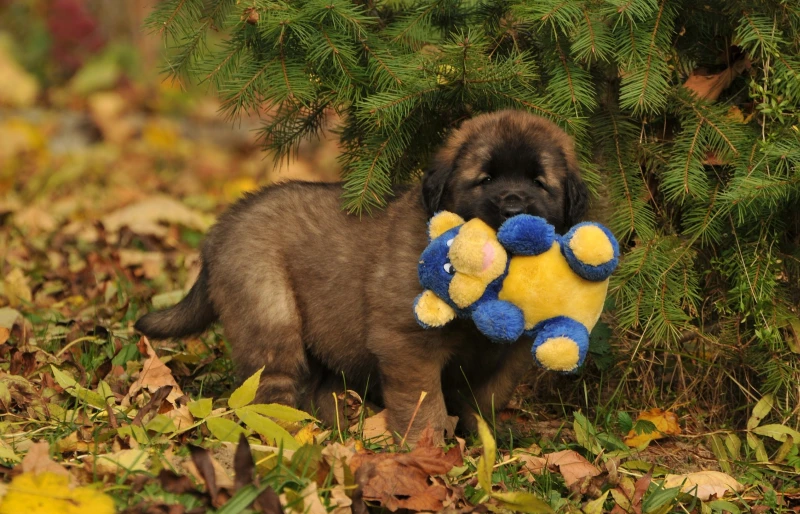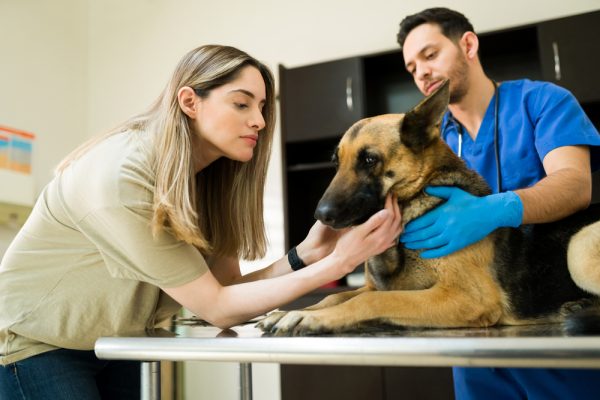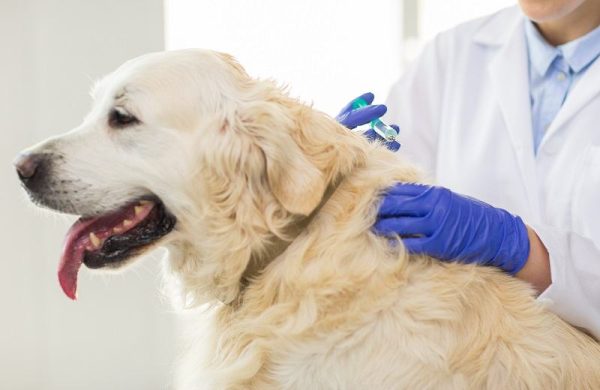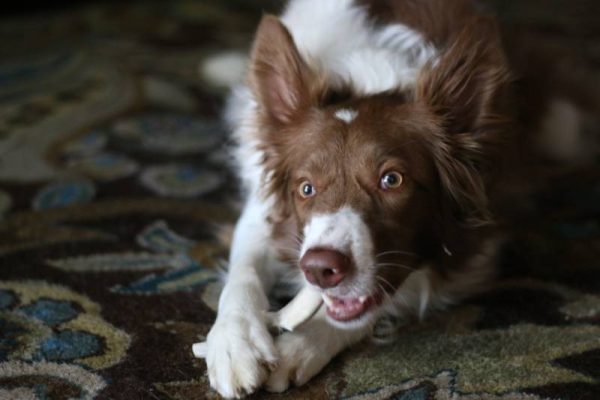In this article
View 2 More +Dogs often interact with toys like they would a real animal, either attacking it like a hunter would or mothering it like a whelping female. Despite these behaviors, dogs don’t think their stuffed animals are real. They understand that they are toys, even if they treat them as they would a real animal.
Read on to learn more!

How Dogs Interact With Toys
Toys satisfy a lot of instincts in dogs. Retrievers enjoy fetching balls or frisbees. Some people believe that hunting breeds tend to enjoy squeaky toys, as the prey they capture may also elicit a sound.
Sometimes, a dog may develop an attachment to a toy and will be seen always carrying it around and cuddling with it. Others enjoy chewing on toys simply because they like to chew.
Despite all these reasons, dogs don’t mistake their toys for living animals. They have extraordinary senses, particularly related to scent. Dogs recognize each other primarily through scent, and their toys wouldn’t smell like another dog does. Therefore, they’re well aware that their toys aren’t a living animal.
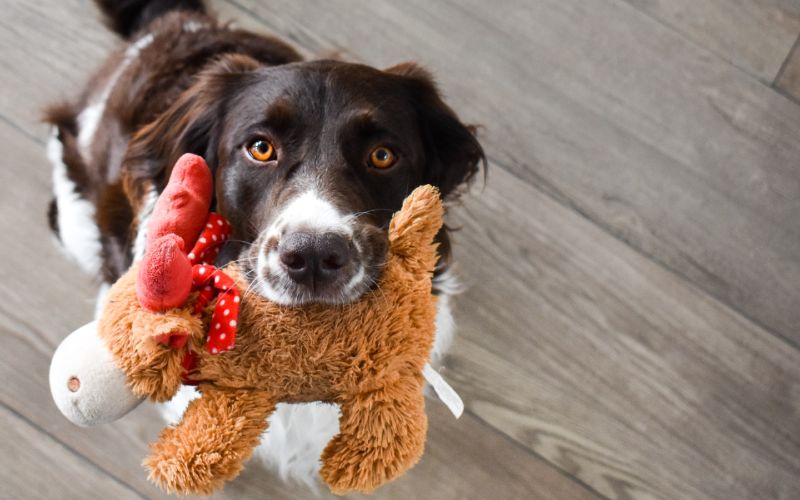
Decoding Dog Behavior With Toys
Some dog breeds can learn verbal names for their favorite toys, such as Border Collies. A recent study published in Animal Cognition revealed that dogs can recognize toys based on key sensory features, notably their appearance and smells, and learn to associate a name with them¹.
In this study, the authors brought in 14 dogs that were identified as gifted word learners. All had demonstrated an ability to understand the names of their dog toys. The dogs were tested in a separate room from their toys, which were connected by a hallway and separated by heavy curtains to remove external stimuli.
The same 10 unfamiliar dog toys were used with all participants, all with different shapes, sizes, colors, and materials. The toys were randomly divided into two sets, and one toy was chosen at random as the target toy. The other four toys were used as “distractor objects.
The owner played with their dog using a target toy, sometimes placing it with other toys and asking the dog to retrieve it. The dog was rewarded for successfully retrieving the target toy.
Once the training period was complete, the dogs were tested in both light and dark conditions in the hallway and toy room with lights off. They were asked to retrieve the target toy from the other toys in the set in a random configuration 10 separate times. Toys were reshuffled between each test. All the interactions were recorded with an infrared video camera to evaluate the toy selection and the searching and sniffing behavior.
The second test was conducted in the same location, except using only four dogs and 20 toys that the dogs had identified. The toys were scattered on the floor randomly to test the dogs’ capabilities in a more complex manner. These dogs were also tested in light and dark conditions.
In the first experiment, all dogs successfully picked out the target toys in all conditions, but it took a bit longer in the dark. Most of them relied on visual cues. In the dark, the dogs spent more time sniffing and searching. In the second test, the dogs were able to select the named toys on command using the same visual cues and sense of smell in dark conditions.
This study confirms that dogs play with toys and record their features using multiple senses—known as multistory mental images. They prefer to use visual cues to identify toys, but they can use smell in certain conditions.
Dogs not only understand that their stuffed animals are not live animals, but they have much more complex methods of distinguishing between their toys than previously thought.
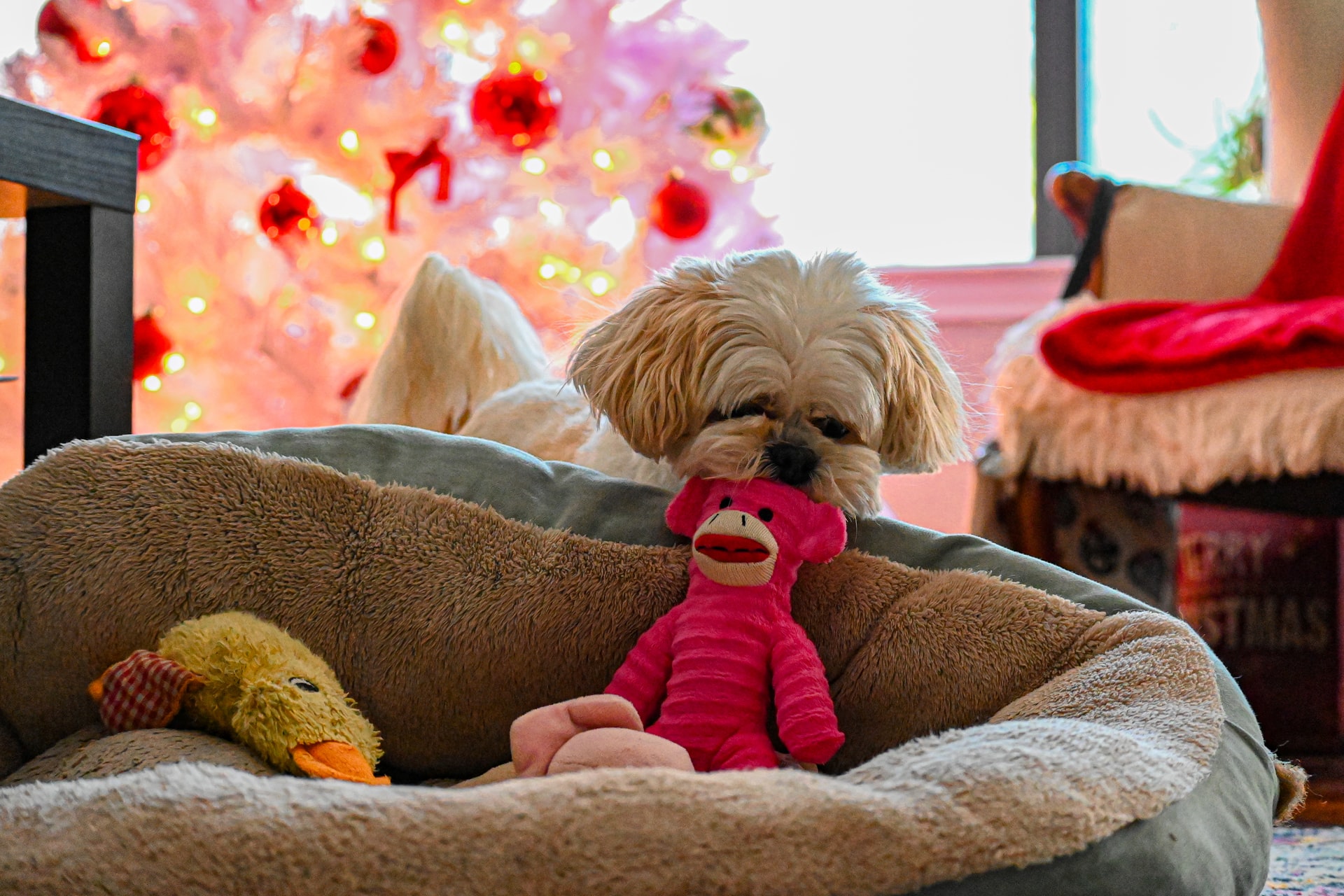
When Dogs Have Unhealthy Toy Behaviors
It’s clear that most dogs understand their stuffed animals are just toys, but that doesn’t stop odd behaviors from developing.
Female dogs will sometimes baby their toys, carrying them around gently, placing them in their beds, or sitting with them. This behavior can escalate to aggression, growing or snapping at anyone that comes close to the toy, just like a whelping mother would.
This type of behavior reportedly happens in intact females that have a hormone imbalance or false pregnancy. Spayed females can display similar maternal instincts, but it’s not as common.
In addition, all dogs can experience resource-guarding behaviors with their toys. Just like humans feel jealousy, dogs can too. This is especially true of dogs in multi-pet households or households with children. They feel a need to guard their toy to prevent others from having it or compete for resources. In this case, the favorite toy.
In the wild, resource guarding is an important behavior for dogs to protect what’s theirs, whether it’s territory, food, or other resources. Unfortunately, this behavior could escalate quickly, especially if your dog came from an environment where they had to compete for resources like food or shelter. If you suspect resource guarding, it’s important to take action early to prevent it from becoming a dangerous situation for the other members of your household. If you are concerned about your dogs behavior, we suggest consulting a vet.
If you need to speak with a vet but can't get to one, head over to PangoVet. It's our online service where you can talk to a vet online and get the advice you need for your pet — all at an affordable price!


Final Thoughts
Dog toys give dogs an outlet for their instincts, such as hunting, mothering, or protecting their resources. They don’t think they’re living animals despite how they may act with stuffed animals. In fact, dogs are much smarter about their toys than we realize.
See Also:
- Why Do Dogs Like Stuffed Animals? 5 Common Reasons
- Do Dogs Think They’re Human? How They Perceive Our Relationship
Featured Image Credit: BoraAlma, Pixabay

